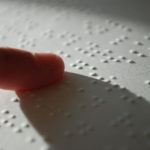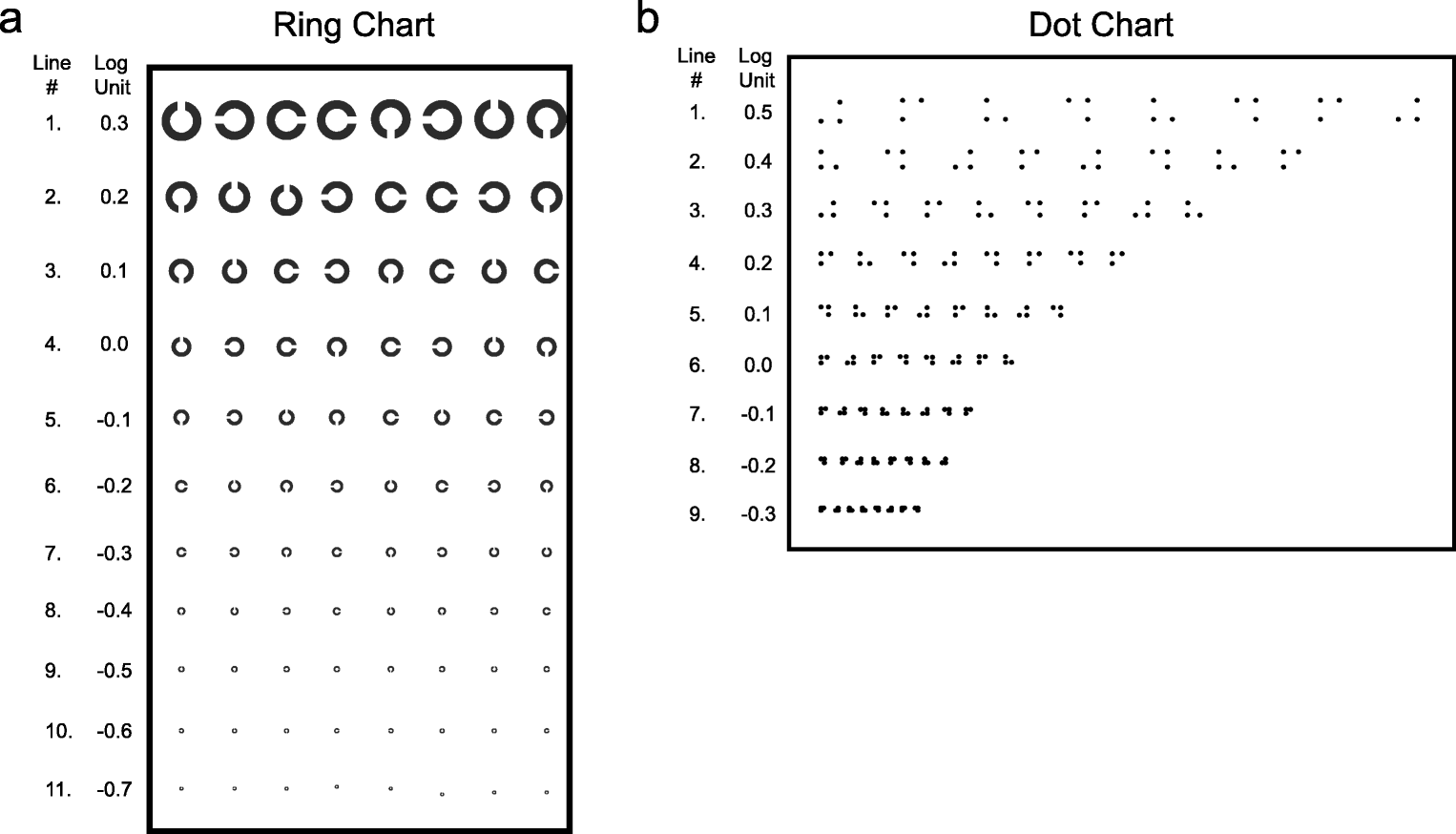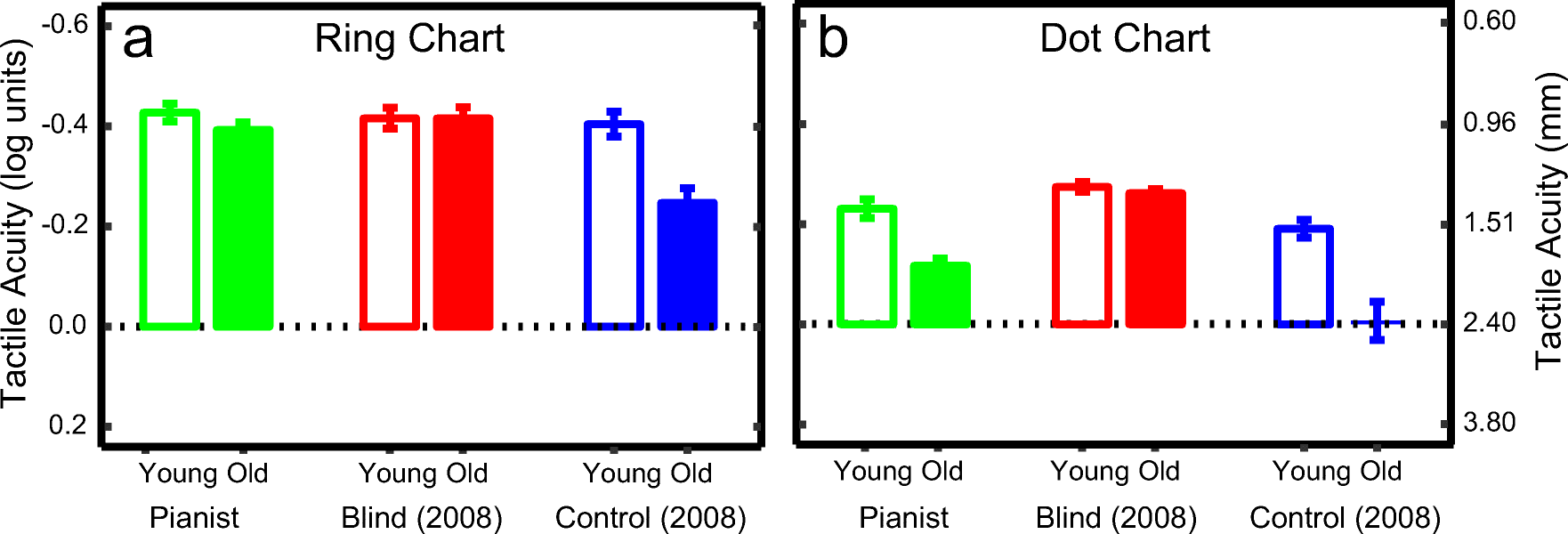
Ever notice how speed texting seems to be a young person’s game? Most Gen Zs and Millennials send messages from their smart phones much faster than their parents and grandparents. As such, tech companies have created settings specifically to make smart phone use easier for the elderly.
One explanation is that tactile acuity declines as we age. Tactile acuity refers to the perception of touch, and age-related changes in the fingertips have been observed long before the onset of smart phones.
Braille reading is another activity that requires sensory precision in the fingers. Braille characters consist of raised dot patterns, and the reader must decipher the patterns by touch. You too can learn how to read braille here. Distinguishing these subtle patterns is a skill that certainly requires optimal tactile acuity. For this reason and other touch experiences, blind subjects tend to have better tactile acuity than sighted controls.
In a 2008 paper, Legge and colleagues tested tactile acuity in blind and sighted subjects across the lifespan from 12 to 85 years old. To do this, they developed two instruments: a ring chart (using embossed Landolt rings and shown in Figure a below) and a dot chart (using patterns similar to braille and shown in Figure b below). Because blind subjects read braille, they may have had an advantage with the dot chart, so that prompted the use of the ring chart.

The ring chart consisted of broken circles, and the subjects had to locate the gap in each symbol (top, right, etc.). The dot chart had patterns of three dots in square formation, and the subjects had to indicate which dot was missing from the square (upper right, lower left, etc.). The symbols decreased in size from one line to the next, making the perceptual differences more challenging.
There was an age-related decline in tactile acuity in sighted subjects at an estimated loss of nearly 1% per year. The blind subjects, on the other hand, retained their tactile acuity into old age. That is, blind individuals outperformed sighted subjects on the tactile tests at all ages, and they did not have an age-related decline in performance.
Legge and colleagues (2008) suggested that blind subjects preserved their tactile acuity throughout the lifespan because they use active touch in daily activities, therefore engaging that system much more than sighted subjects. This led them to ask: if intensive tactile experience protects against the decline of tactile acuity, wouldn’t we see similar results in sighted subjects who spend more time attending to tactile function?
Send in the pianists. Proficient piano players spend countless hours playing the 88s, effortlessly producing rhythmic and melodic patterns with their fingertips. Pianists who have had years of practice have been shown to have better tactile acuity than non-musicians. Some even have such tactile prowess that they can play two pianos simultaneously, like Lydian Nadhaswaram.
Highly skilled pianists must have a keen sense of touch in order to feel their way around the keys. We know that blind individuals generally have heightened tactile acuity, so it stands to reason that blind pianists would be particularly adept at the skill. Take for instance some great pianists such as Ray Charles, Stevie Wonder, and jazz prodigy Matthew Whitaker.
Legge and colleagues published a recent study in Attention, Perception, & Psychophysics that measured tactile acuity of younger and older pianists. They recruited ten younger (average age was 25 years old) and eleven older (average age was 65 years old) sighted pianists. Most of them had been playing since childhood, and they regularly practiced each week.
Using the same ring and dot charts from the 2008 study, and shown in the figures above, they tested acuity of touch perception in both groups. The subjects were blindfolded, and they ran their dominant index finger along each row in the charts.
The results are displayed in the figures below. Smaller scores mean better acuity.
As shown in the figure above (a), on the ring chart, the older pianists performed much like the older blind subjects from the 2008 study, and the older sighted subjects from 2008 had much weaker acuity. As shown in the figure above (b), on the dot chart, the older pianists had weaker acuity than the blind subjects from 2008, but still performed better than the sighted older subjects from that study.
These scores indicate an interaction between aging and experience. Young adult pianists and young adult controls performed relatively the same on both charts. However, older pianists performed significantly better than the older controls on both charts.
It’s interesting that older pianists with normal vision performed so well on these charts. Piano performance is a very different task than pattern detection by touch. Still they are both complex tactile tasks involving high-level cognitive function. Legge and colleagues argue that the focused tactile experience of playing the piano over a lifetime maintains a level of sensory acuity in the fingertips, which explains the older pianists’ performance in this study.
Additionally, more hours of weekly piano practice was associated with better tactile acuity, but the number of years playing did not correlate. This means that continuous intensive tactile experience may promote plasticity in the sensorimotor cortex. This seems to defend against the normal decline of tactile acuity due to age.
Overall, this study provides a message of hope: if you are concerned about retaining sensory perception in the fingertips, there’s still time to make a New Year resolution to learn to play the piano.
Psychonomic Society article featured in this post:
Legge, G.E., Granquist, C., Lubet, A., Gage, R., & Xiong, Y.-Z. (2019). Preserved tactile acuity in older pianists. Attention, Perception, & Psychophysics, 81, 2619-2625. DOI: 10.3758/s13414-019-01844-y.

